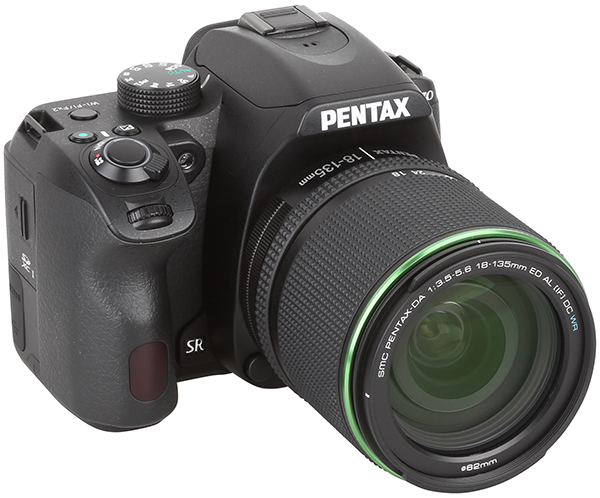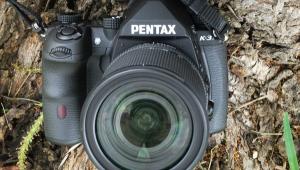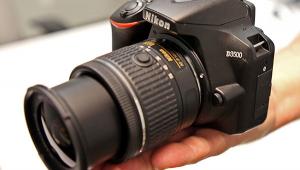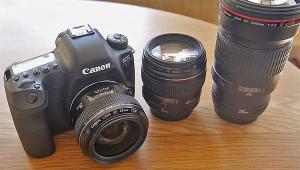Pentax K-70 DSLR Review

(Editor's Note: Lab Review lab tests and comments are supplied by BetterNet, Shutterbug’s TIPA-affiliated testing lab and edited by George Schaub. Shutterbug is the sole US representative within TIPA, a worldwide association of photo and imaging magazines.)
The K-70 is Pentax’s newest SLR camera with a 24MP APS-C sized image sensor. It is a heavy camera (body: 1.5 lbs; 2.4 lbs including the kit lens), yet is quite compact. It has a splash-proof body and can be used in inclement weather conditions. The Pentax SMC DA F3.5-5.6 ED AL IF DC WR kit lens (used for the test) is also weatherproof.
Camera Build, Layout & Performance
The Pentax K-70's DSLR camera body is well balanced. The right hand side offers a stable grip. Two setup dials (the first is located in front of the shutter release button; the second is found on the back and operated by the thumb of the right hand) allows quick and efficient changes of all image parameters.
For menu navigation the Pentax K-70 camera offers a 4-way control field. The four buttons are also used to select important functions, including “WB”, “ISO”, “flash mode” and “shooting mode.” There are two higher speed continuous mode speed settings, a self timer, mirror-up function, and more. The mirror-up function kicks in automatically when using the self-timer function.




The Pentax K-70 uses an integrated image stabilizer system. Due to its “sensor shift” technology, this stabilizer can be used with every single lens attached to the K-70. Pentax specifies the gain of the system as 4.5 EV, which we confirmed during our tests.
The Pentax K-70 has a fully articulated LCD screen on the back with a resolution of 921,000 RGB dots. Combined with the size of the screen (2 inches) it is an average system for this kind of camera. The monitor isn’t touch sensitive: all settings need to be made with the cursor control field and the setup dials. The LCD screen offers additional display overlays like an electronic level. There is no top body status display.
The new camera offers a large and bright viewfinder (compared to other APS-C cameras). It offers 100 percent field of view and shows all important image parameters like shutter speed/aperture setting/ISO speed, flash mode and more.
The K-70 has two buttons that are unique to Pentax cameras. On its top there is a green button that switches functions back to their default settings. On the left hand side of the body the camera offers a button that allows the user to toggle between JPEG and Raw mode. The camera offers two Raw formats: Pentax’s own “PEF” format and Adobe’s “DNG” format. As of this test Adobe Photoshop/Lightroom aren’t able to convert the PEF version of the K-70, so we shot all of our test raw images in DNG mode. To convert DNG and PEF images Pentax supplies “SilkyPix Developer” software with the camera.
The Pentax K-70 offers numerous scene modes for beginners and additional image modes. In HDR mode, for example, it records three images with different exposure settings and combines these images to obtain the effect. It also offers some presets for tone mapping HDR images.
The sensor shift stabilizer system offers additional functions: The Pentax K-70 camera can automatically detect a slanted horizon line and correct this automatically by rotating the sensor in the opposite direction. This function can be activated in the main menu.
In addition, the Pentax K-70 offers “pixel shift” images. It will take four images, each shifted by one pixel: these images are then combined to one single picture. In contrast to Olympus cameras, this technology isn’t used to enhance image resolution but to create images with a very clean look because the camera captures all the RGB information for all pixels and avoids the “color interpolation” effect.

Comments on Image Quality
Color: Like nearly all Pentax SLRs, the K-70 uses the “Bright” color mode by default. It reproduced the test chart with an average saturation of 123.1 percent and very large aberrations to given color values to its given values. The over saturation is very high even when compared to an entry-level (compact) camera.
Our tests are done in default settings, but we did some additional shots with different color settings, which can be set up in the “Custom Image” menu of the camera. When using the “Natural” setting the camera will produce images with less color errors, based on drastically reduced color saturation. The result chart shows a drop to an average saturation of 98.8 percent, which is nearly perfect. (Note: we suggest changing from the default setting.)
Sharpness: The Pentax K-70 showed an average performance in our resolution tests. The camera reproduced the ISO 12233 chart with 3507 of 4000 lines per picture height and showed high ““overshot” effects with intense hard contrast lines. Real life images are captured with a slightly smoother look. This is visible in our portrait shot and in the image of the standard test box. The differentiation of difficult colors like the red of the thread spool in the box shot or the model’s t-shirt is very good, even though the saturation is very high (in default mode.)

Noise: In our noise tests the camera showed good results when taking images at lower ISO speed settings (up to 1600/3200). The luminance noise factor is higher than in images taken with competing cameras and comes to about 0.8-1.0 percent, even at ISO 100 and 200. Color noise is very low in these images so results are very good at these speeds. At higher ISO speed settings the color noise and anti-noise-filtering become quite intense. At its highest speed setting of ISO 102,400 the camera shows a luminance noise factor of 4.35 percent (!) and blurs image details by smoothing filtration. In addition, the dynamic range drops drastically to 4.65 f-stops, while the camera is able to record a maximum of 11.5 f-stops at ISO 200 and keeps a high level of 10-11 f-stops at ISO speed settings up to ISO 6400.
(Note: We feel it would be helpful to limit ISO speed settings to a maximum of 12,800/25,600: perhaps the highest speed settings should be thought of as “additional high speed modes” and used only when absolutely necessary.)

Video Format and Handling
The Pentax K-70 is able to record Full-HD video with 1920 x 1080 pixels up to 30 frames per second. In addition to progressive frame (including PAL compatible 25 frames per second) and Blu-ray compatible (24 frames per second) recording it also offers interlaced recording modes with 50i and 60i, which doesn’t really make sense for video presentation on modern LCD screens (computer monitor, Internet broadcasting). When recording in HD resolution (720p) it is able to record 50 and 60 progressive frames per second.The camera records MP4 videos with H.264 compression as MOV files (container format for MP4). Just like still files, video can be recorded on SD/SDHC and SDXC cards.
To activate video recording the photographer has to use the ON/OFF switch located at the shutter release button. The switch has a third position which starts video recording (indicated by a red instead of a green LED light at the shutter release button); this also activates the LCD screen which is used as an“electronic viewfinder” for video recording.
Exposure modes are activated by the large mode dial on the top of the camera. The Pentax K-70 offers video recording in P, AV (aperture priority) and M (manual) mode. While the user can set up shutter speed in manual, the camera doesn’t allow for TV (shutter priority) mode. The camera offers electronic image stabilization when recording videos. In some clips we saw a very slight jitter when using this system.
In manual mode the photographer can also choose ISO speed settings, though the highest speeds are not available. Custom color mode settings like “Bright” or “Natural” used for photography can also be used for video. Sound level can be set manually, but the K-70 doesn’t offer an interface for external microphones or headphones.

Comments on Video Quality
The Pentax K-70 showed a disappointing performance in out video resolution tests. The test chart was reproduced with 626 of 1080 lines, which is very low. Even though the resolution result is very low the video clips have a slight over-sharpened look and look a bit blurry. The reproduction of the color test chart was very good; there are only minor aberrations of most colors to their given values. While the test chart showed good results our “live” clips showed some issues: blue sky was reproduced with a very high cyan rate, and most other colors are a little bit boosted. The noise tests in video showed very good results. Due to the reduced image resolution and downsampling, the luminance noise factor is lower than in still images taken at the same ISO speed setting. Dynamic range results are very good: the camera recorded video clips with a maximum of 10.6 f-stops.
Scoreboard
Pros
+ Compact SLR system
+ Splash-proof, weatherproof body
+ Large optical view finder
+ Easy handling, scene modes for beginners
+ Fully articulated LCD screen
+ Wi-fi for remote control and image data transfer
Cons
- AF system nearly on same level as found in “beginner” SLRs
- Few interfaces (for example, microphone jack for video recording is missing)
The Pentax K-70 comes in black and silver finishes and sells for $649.95. More info here.
(Lab Review is where we publish web-exclusive lab reports on cameras. To read more Lab Reviews, click on the Reviews tab on the top navigation bar of this page. New photo gear reports are published frequently, so check Reviews for more equipment evaluations from Shutterbug writers.)

















































